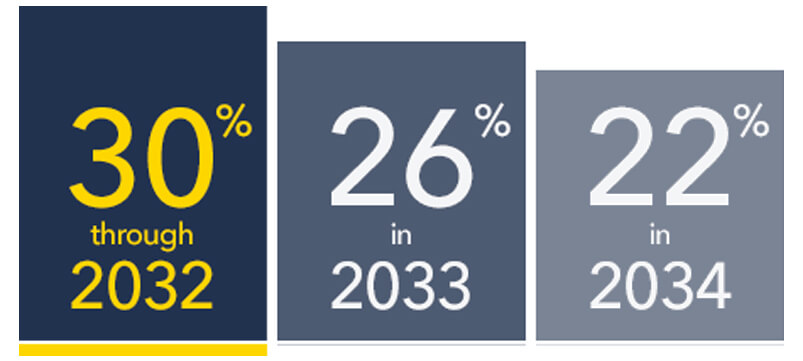Get the latest news and stories about geothermal straight to your inbox.
It’s easy to feel frustrated while researching how much geothermal heating and cooling costs. Many articles present extreme price ranges with little insight into the factors that affect the price of the system. Without this knowledge, it’s difficult to understand the value of a geothermal installation or feel confident you’re paying a fair price. In case you’re in a hurry, click here to skip to Dandelion Geothermal’s price.
For example, some online resources only provide the price of the heat pump, without factoring in drilling, installation, or trenching--essential components that account for 55% to 75% (or even more!) of the total system price. In short, these numbers can set false expectations for potential geothermal buyers.
We created this guide to serve homeowners interested in geothermal, whether you’re just browsing, evaluating your options, or in the midst of making a decision. While an in-person consultation and site survey is the best way to get accurate estimate, the following information will get you started!
In order to install a geothermal heating and cooling system, you need permission from your local municipality. This review period can last weeks or even months. While it might be inconvenient to wait, the permitting process is a necessary tool municipalities use to regulate what’s getting installed and protect the homeowners in their community.
Each permitting application is unique in terms of the required information, the turnaround time, and the application fee. This fee can vary widely between $75 and over $1,000. In general, most permits cost a few hundred dollars.

An average geothermal heat pump costs between $1,500 to $2,500 per ton within Dandelion's service territory which includes parts of New York State. While the precise heat pump size is dictated by the home’s heating and cooling needs, a standard single-family 2,000 square foot home usually requires a 5 ton heat pump ($7,500 to $12,500).
The actual heat pump price is scaled up or down based on the variables below.
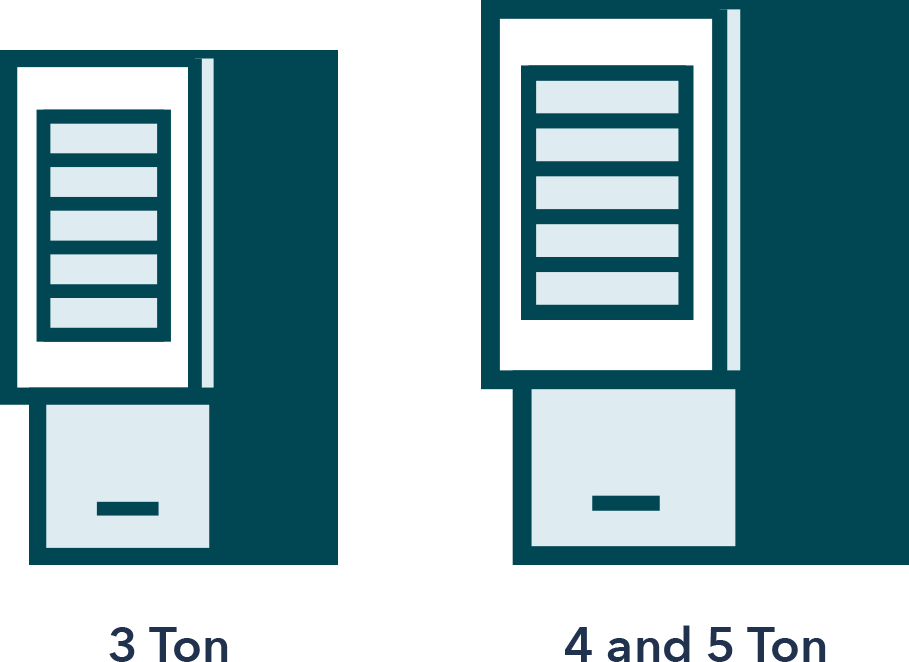
Heat Pump Size
A geothermal heat pump must be properly sized to meet a home’s exact heating and cooling needs. Reputable contractors perform what’s known as a Manual J, the industry standard for calculating a home’s heat gain and loss -- the amount of heat lost through the home’s exterior in the cooler months, and the amount of heat gained in the warmer months. Numerous variables affect a home’s heating and cooling needs, including home size, insulation, the number of windows, geography, duct leakage, and even orientation to the sun.

When designing the Dandelion Heat Pump, we wanted to balance quality, efficiency, and cost. We chose to build a 2-stage heat pump because it provides a lot of efficiency without the additional expense that comes with a variable-stage pump. This means our customers see a faster return on their investment.
Heat Pump Efficiency Rating
Two measurements are used to calculate the efficiency of a geothermal heat pump -- Coefficient of Performance for heating (COP), and Energy Efficiency Ratio for cooling (EER). COP indicates the ratio of heat produced to the amount of energy used to produce it, whereas EER indicates the amount of heat removed from your home to the amount of energy used to remove it.
Geothermal systems generally have COPs between 3-5 and EERs between 15-25. A heat pump is also the only heating and cooling machine with a COP above 1! The higher the COP and EER, the less electricity (and money!) used to operate the machine, but the higher upfront cost to purchase it.
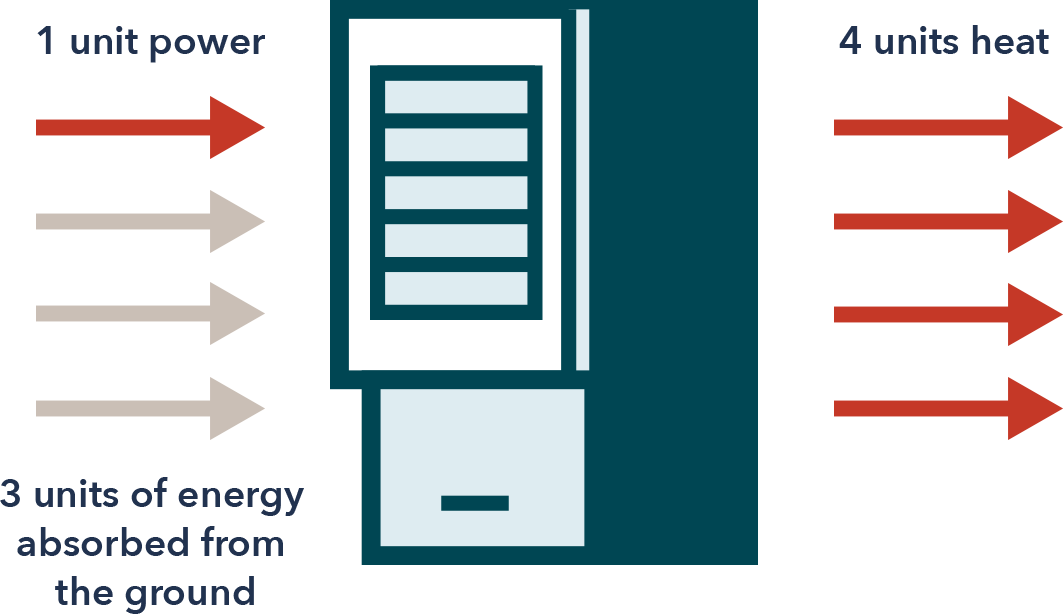
On average, geothermal heat pumps are 400% efficient. That means for every 1 unit of energy used to power your geothermal system, 4 units of heat energy are supplied to your home. Energy is not created as part of this process - when 1 unit of electricity is consumed to deliver 4, it means that 3 units of energy are absorbed from the ground.
Combustion-based systems like oil-furnaces, however, are unable to reach even 100% efficiency because they always deliver less energy than they consume.
Packaged System vs Split System
A geothermal heat pump contains 3 primary components:
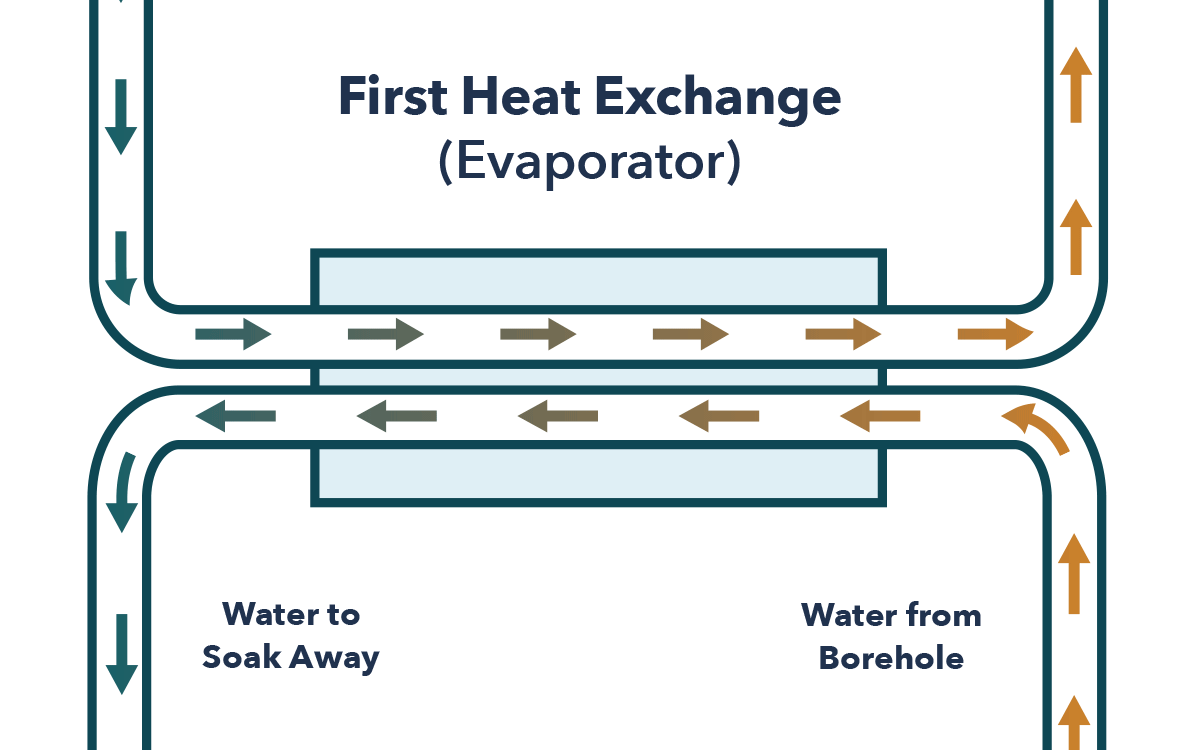
A heat exchanger that interacts with the outdoor ground loop
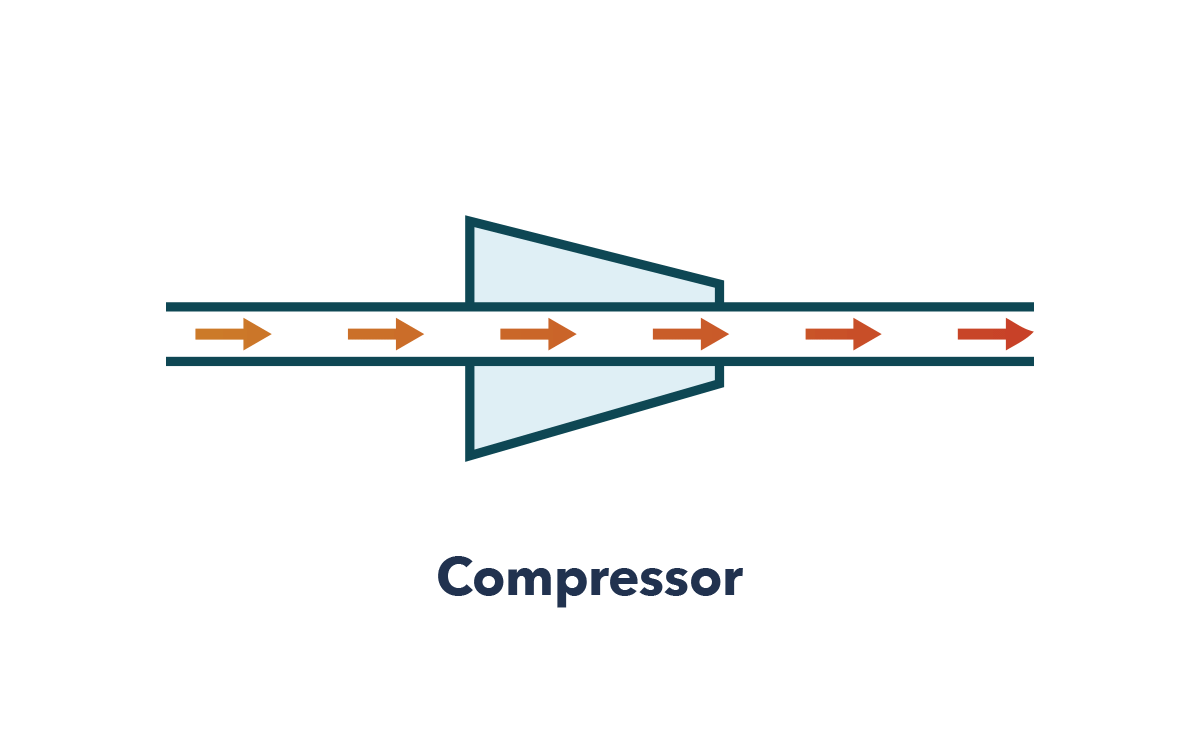
A compressor
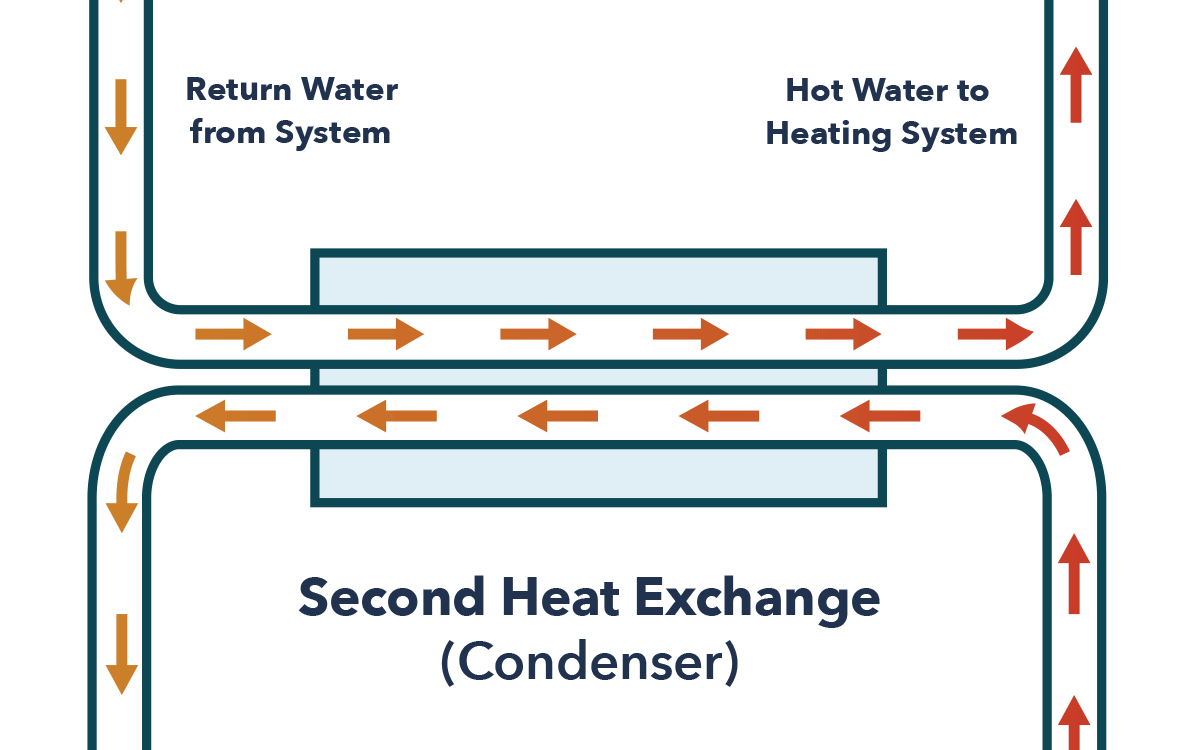
A heat exchanger that interacts with the indoor ductwork or hydronic distribution system.
When these components are contained in a single box, it's called a "packaged" unit. If you split the pieces into separate boxes and install them in different places in the house, it's called a "split" system.
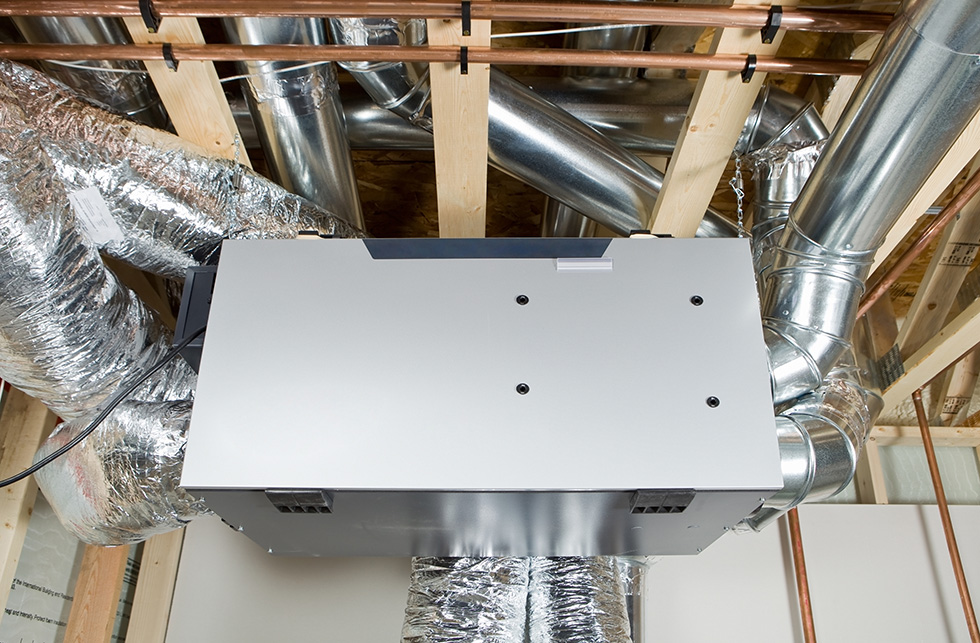
Homes with ductwork located in the attic or with low-ceiling basements generally require a split system.
Split systems are more complex to install than packaged units. A packaged unit has all the pieces that need refrigerant in one place, so it’s easy to “charge” the system with refrigerant at the factory where it’s manufactured. Split systems, however, must have these pieces connected on-site with copper tubing where they’re brazed together and finally, charged with refrigerant.
Because of a split system’s additional equipment, complexity, and labor, they’re typically more expensive than packaged systems. They have the added benefit, however, of more flexibility with respect to where the heat pump and air handler are located in your home.
Heat Pump Compressor Type
There are 3 types of heat pump compressors: single-stage, two-stage, and variable-stage.

A single-stage heat pump has only one setting — full blast.
Once your desired temperature is reached, the unit will switch off. This means single-stage heat pumps don’t have the ability to operate at lower, more efficient speeds and frequently shut on and off. These short run-times lead to less uniform temperature distribution throughout the home and a higher likelihood of hot and cold spots.
Single stage heat pumps are simple which means they cost less to purchase and repair. Because of their simplicity, however, they have higher operating costs than two-stage and variable-stage heat pumps due to the frequency with which they cycle on and off.
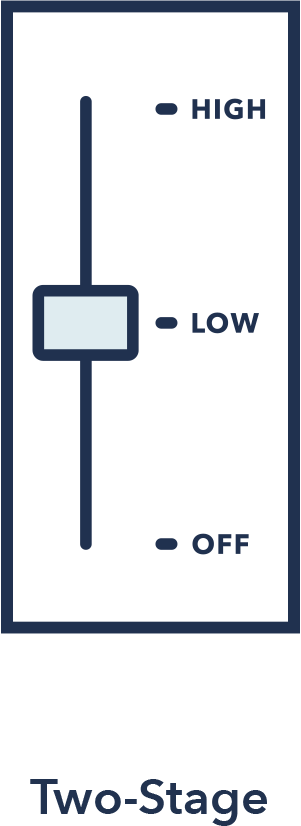
A two-stage heat pump has 2 levels of intensity - high and low.
It'll cycle on and off in low speed (first stage) for the majority of the year, until if gets really cold/hot out and needs to jump to high speed (second stage) to keep up. It jumps between stages automatically as dictated by the thermostat control. The unit consumes less electricity in low speed (making the system more efficient), and runs for longer periods of time. These long run times circulate and mix the air in the home, making it more uniform and dehumidified throughout. This eliminates the likelihood of hot and cold spots.
Once the home has reached its desired temperature, the system will switch to the lower stage and continue to run. This fluctuation allows the home to efficiently maintain a steady, even temperature. Two-stage heat pumps typically cost more than single-stage heat pumps but less than variable-stage heat pumps while achieving moderate to excellent efficiency levels.
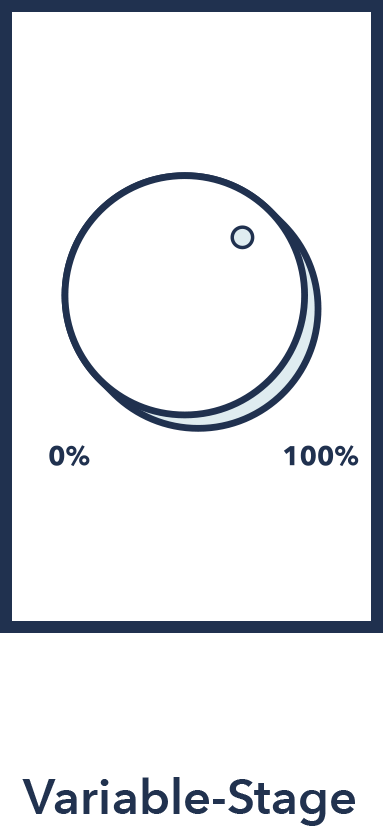
A variable-stage heat pump can vary its levels of intensity incrementally.
As a result, these units rarely shut off while maintaining a consistent temperature and excellent efficiency. Variable stage heat pumps cost more than either single or two-stage heat pumps but can experience higher repair costs due to their complexity and only average durability.
It’s worth noting that although variable-stage heat pumps are more efficient than 2-stage heat pumps, the efficiency gain from two-stage to variable-stage is modest relative to the price increase for variable-stage capabilities.
Most residential heat pumps range in size from 1 (12,000 BTU/HR) to 5 tons (60,000 BTU/HR). Homes with larger heating and cooling loads require larger heat pumps -- and sometimes even more than one. The larger the heat pump, the greater the cost.
Water-to-Air Heat Pump or Water-to-Water Heat Pump
A water-to-air heat pump is suitable for homes that use ductwork for heating or cooling, whereas a water-to-water heat pump is compatible with homes that use water-based heat distribution systems like radiators or in-floor radiant heating. Water-to-water distribution systems are generally more complicated and thus more expensive.
Older homes generally have distribution systems that are designed to deliver heat with the high temperature water that you get from a boiler (180F). Water-to-water geothermal systems can only deliver up to about 120F water temperatures, which usually means the old distribution system (radiators, etc) need to be replaced or abandoned altogether. These costs quickly add up.

The Dandelion Heat Pump is a water-to-air pump. That means it’s only compatible with homes that use ductwork to heat or cool.
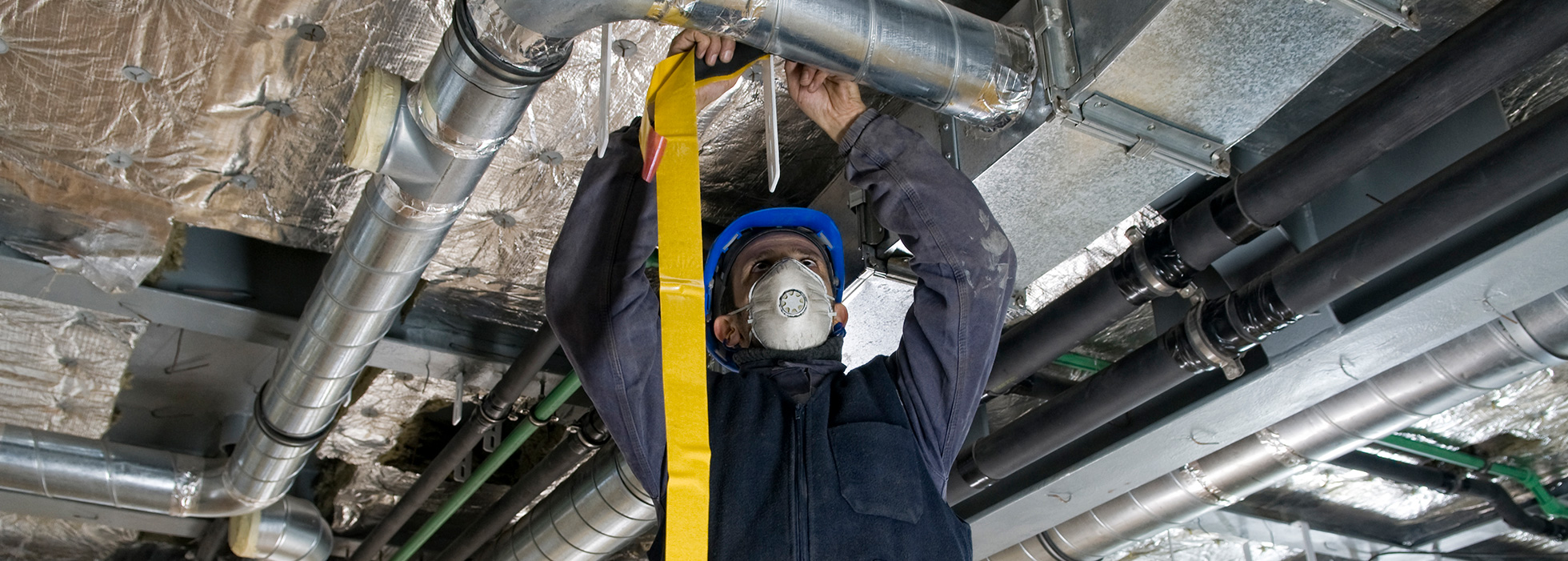
Zone Control
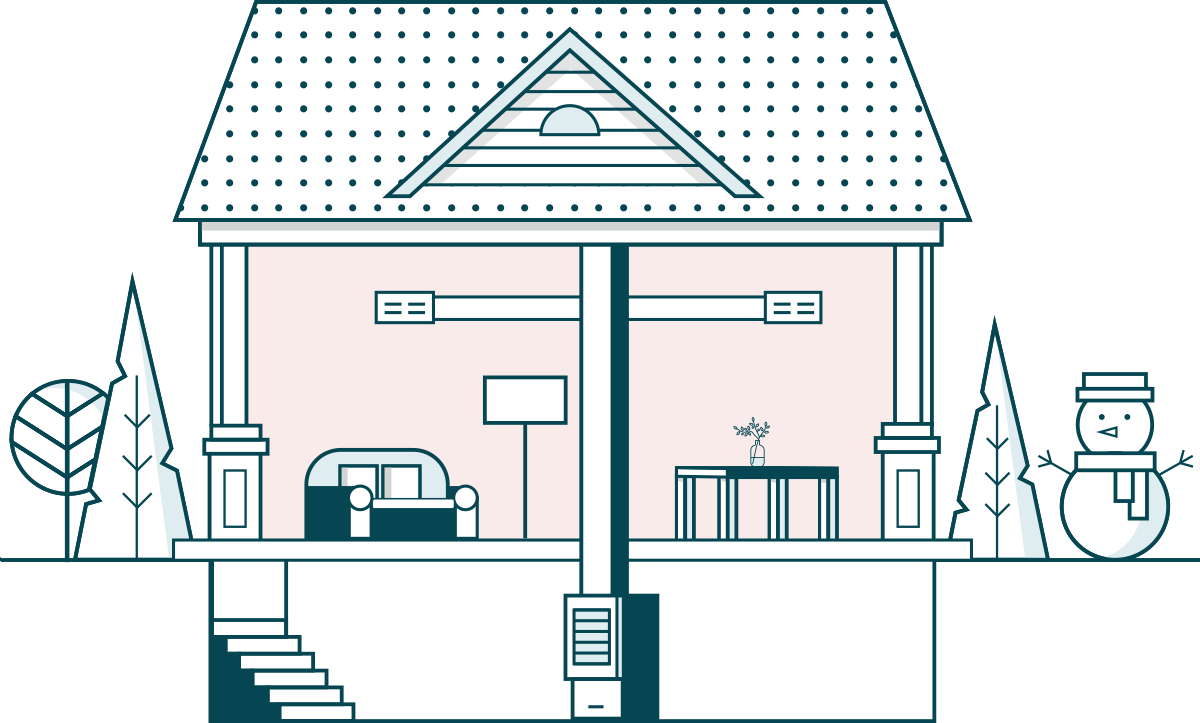
Single Zone
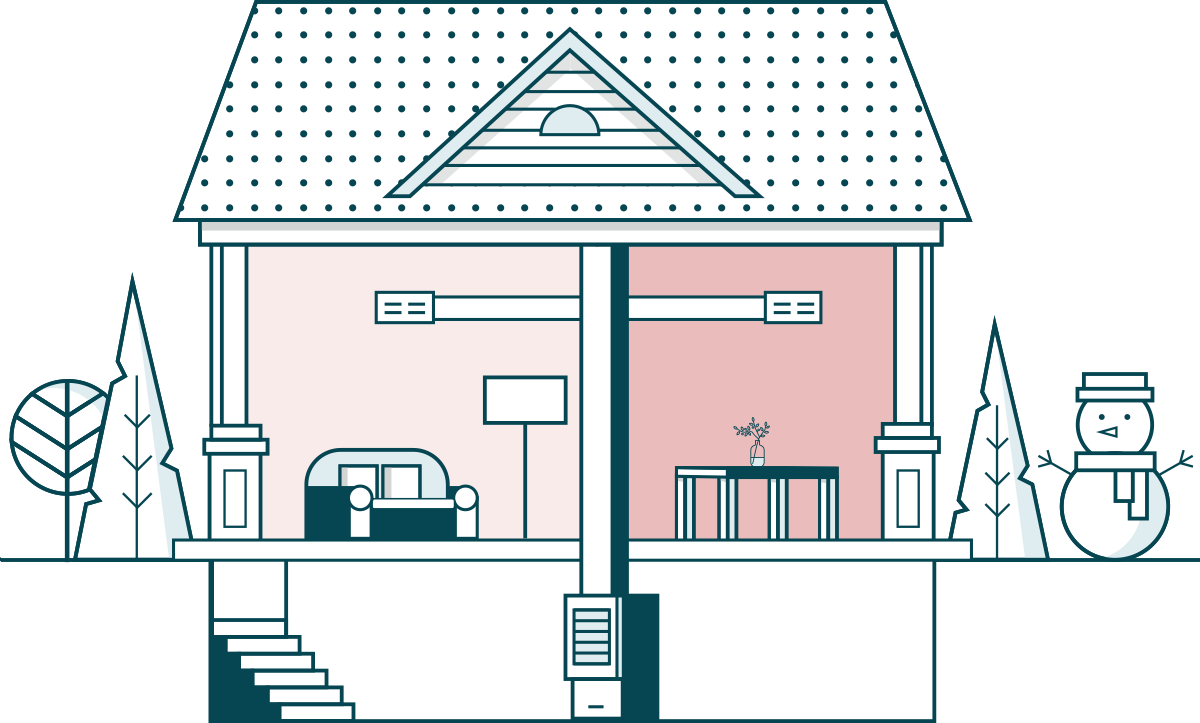
Multiple Zones
A single zone home has “all or nothing” heating and cooling, meaning the warm or cool air will distribute throughout the entire home while the system is running. Homes with multiple zones are divided into areas that each have their own individual temperature control.
Installing zoning requires the installation of dampers, a zone control board, and additional thermostats to control where the heated/cooled air from the home is being sent. Duct zoning provides more granular temperature control in sections of the home (e.g. you can have a separate zone in the basement and on the main level), but the additional components add to the cost.
Ductwork Usability
In some cases, a home’s existing ductwork is in poor condition or needs other modifications.
If a home does not currently have any ductwork, adding it can cost between $5,000 to $20,000 or more depending on the home size, ductwork complexity, and other factors.
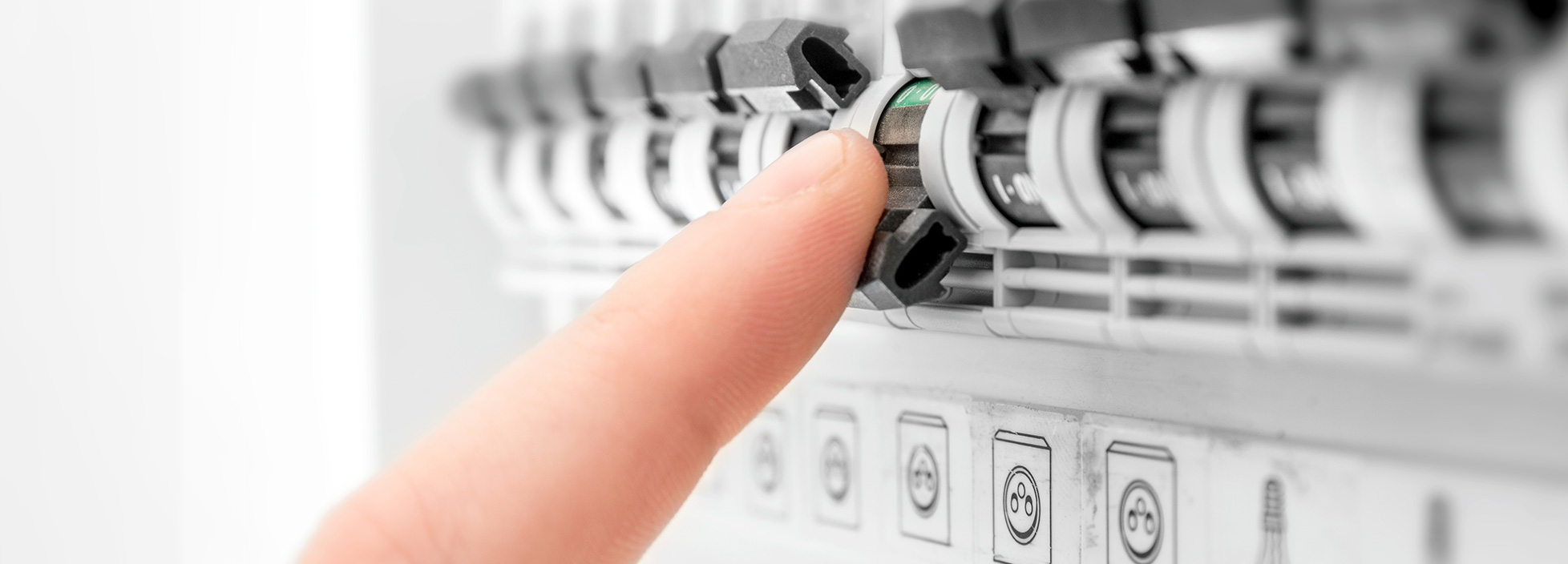
Installing a geothermal heat pump is often part of 'electrifying' a home. That is, transitioning away from using fossil fuels on site to using electricity for all of the home’s needs. Electrifying a home increases the total amount of electrical power that is pulled, and this can sometimes strain the main line or panel that handles the home's power.
In these cases, the line and/or panel must be increased in size. This increase is sometimes minor and relatively common, so the cost will be lower. Some homes require a significant increase, however, which comes at a cost-premium.

Ground Loop Type
There are three types of closed loop geothermal systems: vertical, horizontal, and pond / lake.
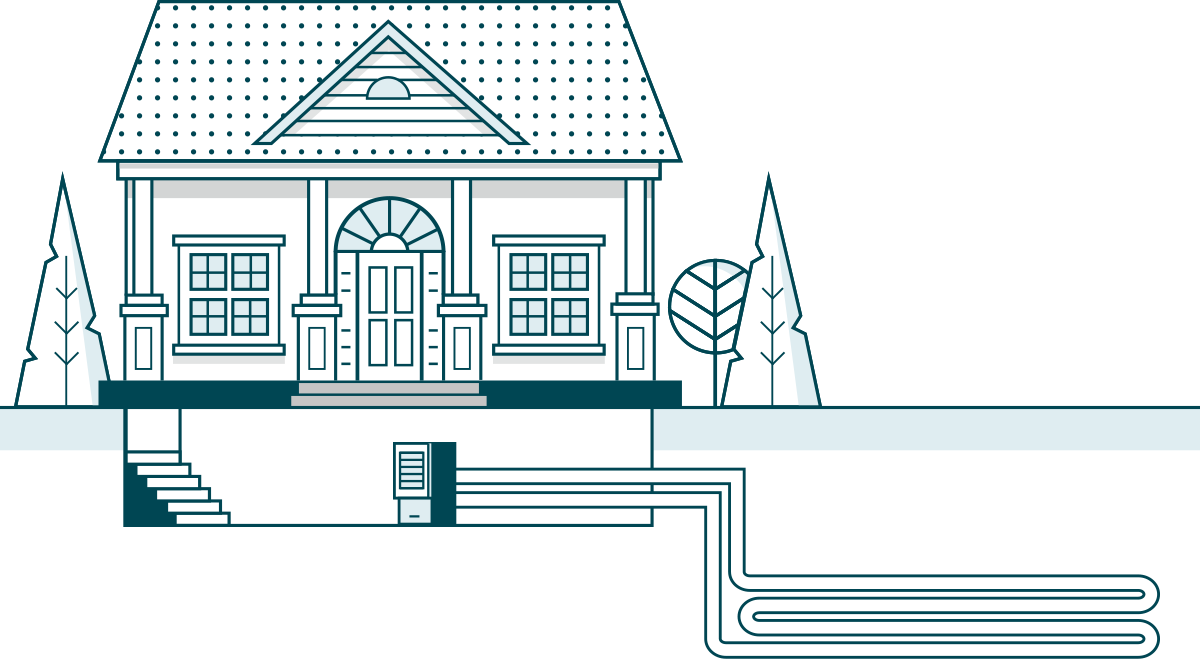
A horizontal ground loop is installed over a wide area of ground and requires enough space to dig trenches hundreds of feet long and 6-10 feet deep.
The average direct cost to install a horizontal ground loop typically ranges between $1,000/ton to $2,000/ton. If a typical 2,000 sq. foot home requires a 5 ton heat pump, it might be $5,000 to $10,000 to install the ground loops. This cost includes only materials, labor, equipment, and supplies and is not the same as the price paid by the customer.
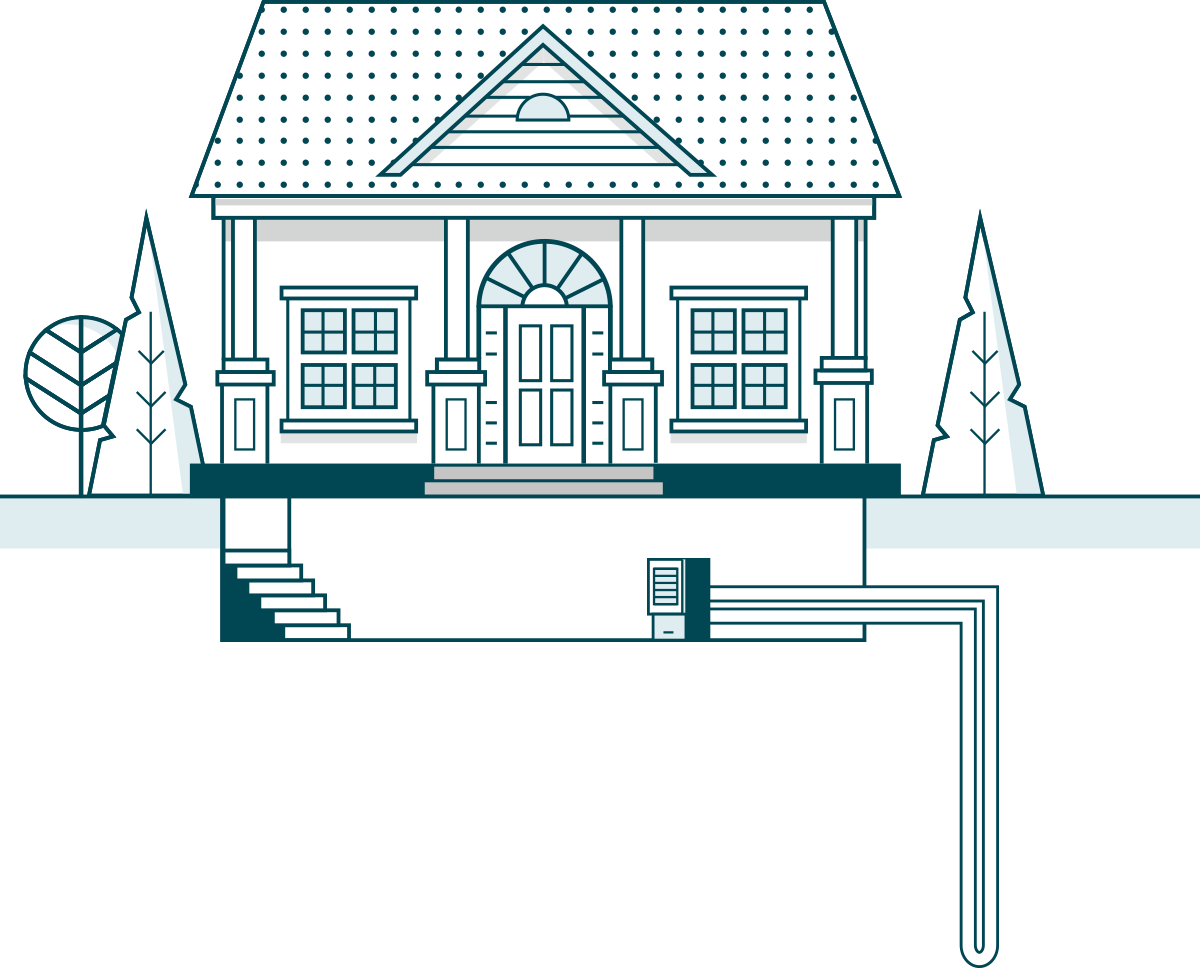
A vertical ground loop is installed in one or more boreholes about 200 to 500 feet deep in the ground. Each hole is 6 to 8 inches in diameter, and if you have more than one, they’re about 20 feet apart.
The average direct cost to install a vertical ground loop typically ranges between $1,600/ton to $4,250/ton. If a 2,500 sq. foot home typically requires a 5 ton heat pump, it might be $8,000 to $21,250 to install the ground loops. This cost includes only materials, labor, equipment, and supplies and is not the same as the price paid by the customer.
A pond / lake ground loop is installed in a nearby pond or lake with adequate size, depth, and flow. Because this type of ground loop requires a water source on the property, it’s relatively uncommon, and we don’t discuss it in detail.
The most appropriate loop type for your home primarily depends on the amount of land available (and whether or not you have a pond on your property!). All three loop types can be equally efficient when installed properly, but the cost can vary widely due to the factors explored below.
Ground Loop Size
The ground loop size is based on the geothermal heat pump size, the soil conditions, and the overall climate. The larger a home’s heating and cooling load, the larger the geothermal heat pump required, and therefore the larger the ground loop needed.
Soil
Several factors affect soil’s ability to transfer heat including moisture, composition, temperature variation, and density.
Moist soil will usually transfer heat more efficiently than dry soil. Heat transfer increases with stable, constant temperatures. Temperatures are more consistent in deep ground and less consistent in shallow ground.
Dense rock and clay can hold and transfer more heat than sand.
Ground Loop Equipment
Geothermal ground loops are installed using either drilling or trenching equipment based on the loop type and depth. Because horizontal ground loops are long but shallow, installers use a backhoe or a chain trencher to dig them. Alternatively, vertical ground loops require a drill rig to drill one or more holes several hundred feet deep as well as grout machine to fill in these holes.
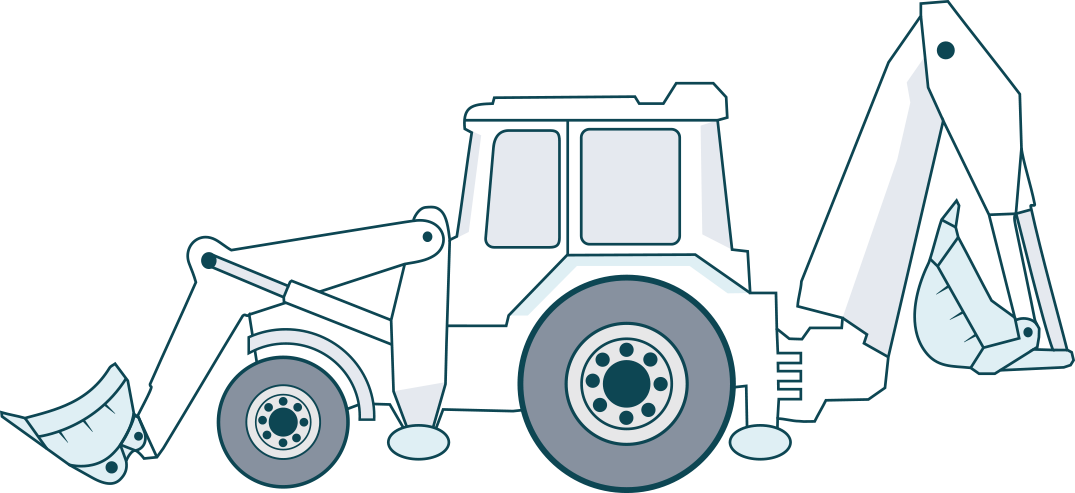
Backhoe
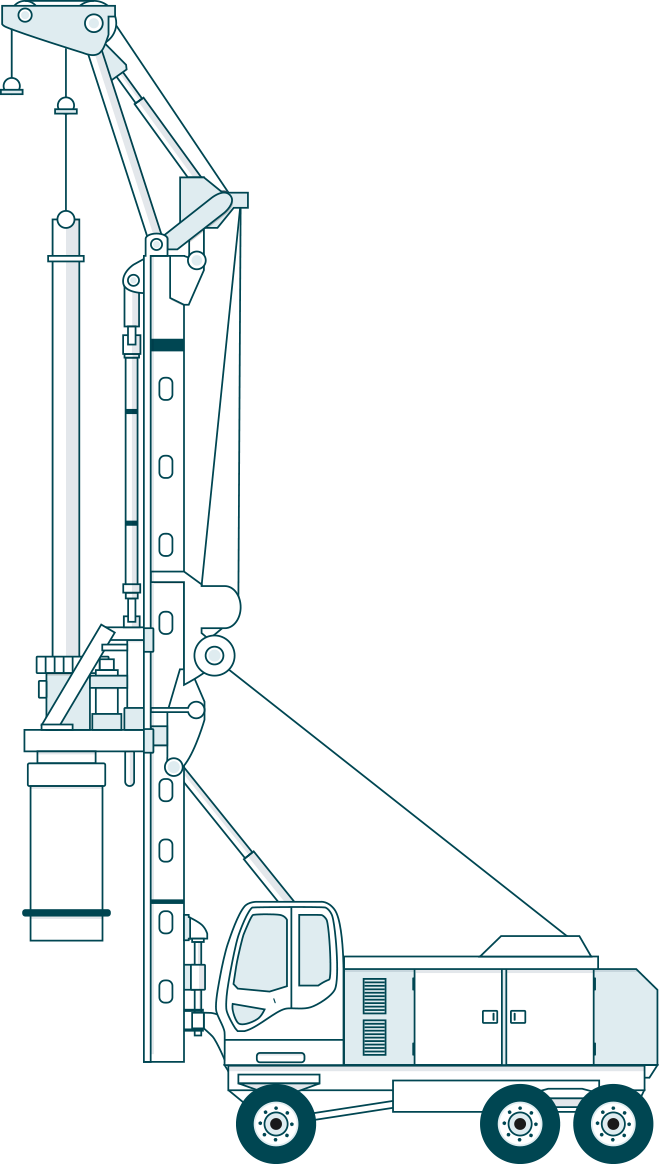
Drill Rig
Drilling is almost always more expensive than trenching. While the cost of trenching is typically between $2.50 to $5 per foot, the cost of drilling a vertical loop is typically between $5 to $15.50 per foot, and can even extend to $30 per foot. For many homeowners, vertical ground loops are the best and only option due to space constraints and local geography.
Below we’ll review some of the factors that impact the cost of drilling.
Updated June 2020. Please note the incentive landscape is rapidly changing and may have shifted by the time you come across this resource.
In 2021 and 2022, the federal tax incentives known as the Investment Tax Credit (ITC) will cover 26% of a Dandelion geothermal system. However, the percentage covered by the ITC will decrease to 22% in 2023, and 0% in 2024.
What Federal and State incentives apply to you as a NY state homeowner?
In 2018, Department of Energy passed a Federal Tax Incentive for geothermal ground source heat pumps called the Investment Tax Credit (ITC). In the form of personal tax credits, these incentives save Dandelion customers thousands of dollars.
As a New York State homeowner, you qualify for the New York State Energy Research and Development Authority (NYSERDA) New York State Clean Heat Program. The State of New York and the 6 electric utilities that serve New York State have allocated substantial funding for ground source heat pump installations. Dandelion is an approved Participating Contractor in the program.
How do the New York State rebates work?
New York State's Clean Heat Program is administered by the homeowner’s utility. Let’s go over some important details to explain how these incentives are allocated.

Each utility has a unique incentive.

The incentive amounts are based on the installed heat pump’s total heating capacity BTUH.

A geothermal heat pump containing a desuperheater qualifies for an additional incentive.
Dandelion offers homeowners state of the art geothermal heating and cooling at an affordable price.
The Dandelion Geothermal system provides home heating, central air conditioning and hot water at over four times the efficiency of any furnace on the market. It’s designed for homes that distribute heating or air conditioning using ductwork and vents.
Geothermal Expertise
QualifiedOver 100 combined years of geothermal experience
Experienced#1 New York residential geothermal installer by volume in 2018 and 2019
InnovativeIncubated at Google’s X Lab
Efficiency
Own the ProcessWe sell, install, and service our own product
Total IntegrationOur energy consultants work directly with our site survey and design teams to integrate load calculations, ground loop layouts, and other parts of the design process
Smart Innovation
Unlike traditional heating systems, Dandelion’s package heat pump has remote monitoring capabilities at no additional cost. That means that by using wifi and secure cloud storage, we collect data about how every part of the system is operating and make recommendations so it can operate even better.
Peace of Mind24/7 monitoring so we can catch any problems before you do
ConvenienceControl your home’s temperature on the go with your free Smart Thermostat
Always ImprovingAutomatic software updates so your system will get even smarter over time
Dandelion Geothermal starts at just over $18,000 – $25,000 (after federal, state, and utility incentives) for a 3 - 5 ton heat pump system which includes all installation costs. $0 down financing options are also available, starting at $150/month for a 3 ton heat pump.
This price can increase based on additional complexity like ductwork modifications, electrical upgrades, zoning, bedrock removal, or if multiple heat pumps are needed.
Here is an example of a typical 2,500 square foot home in Cortlandt, NY with fuel oil heating and central air conditioning versus a Dandelion Home Geothermal Heating and Cooling System.
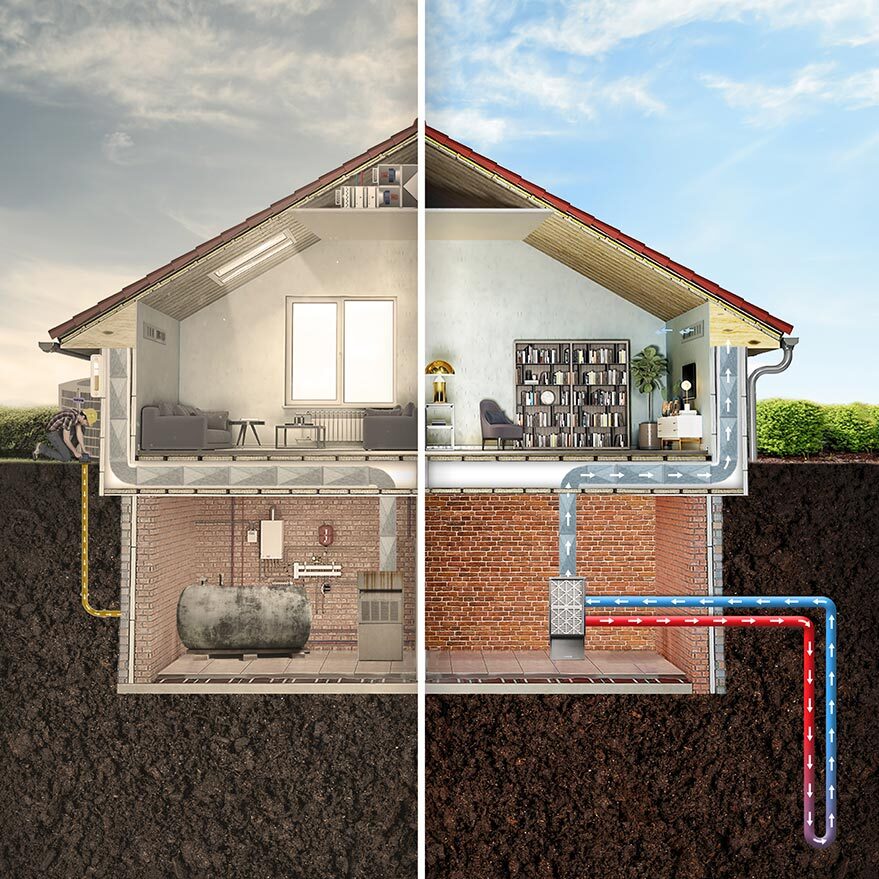
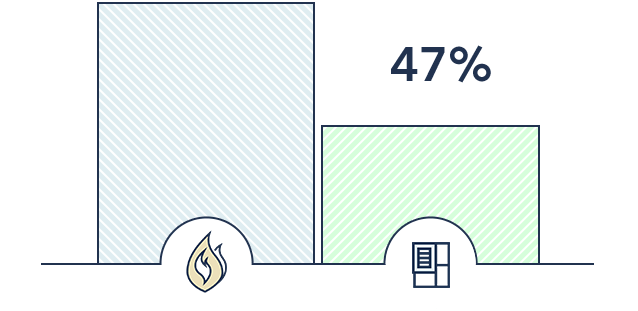
47% reduction in Annual Heating & Cooling Costs with a Dandelion Geothermal System
